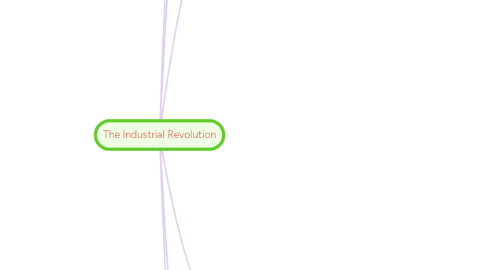
1. Changes during Industrial Revolution (Jade)
1.1. Children's conditions
1.1.1. Writing Speaking
1.1.1.1. Students can use Present Simple and Past Simple to formulate their opinion. Students can write down pros and cons related to the statements. Students can communicate with each other making use of the right vocabulary.
1.2. Steam machine
1.2.1. Speaking Writing
1.2.1.1. Students can talk about who invented the steam machine and make use of the right vocabulary in their Powtoon. Students can work with Powtoon to create a clip on the Steam machine. Students can explain at least one inventor of the Steam machine.
1.3. Spinning Jenny
1.3.1. reading
1.3.1.1. Students can read a text and understand the majority of the text. Students can predict what a text is about when they have read the first paragraph. Students are able to write a short Twitter message on the Spinning Jenny, using the vocabulary they have learned from the article.
1.4. Cars
1.4.1. speaking listening
1.4.1.1. Students can talk about cars for at least two minutes using notes to help themselves. Students can record themselves for at least two minutes. Students are able to create an infographic about cars. Students can explain at least 4 words which they have found in the articles.
2. Second Industrial Revolution (Ramtha)
2.1. Working in a factory
2.1.1. Reading, writing
2.1.1.1. Students can write a journal page imagining themselves being someone else. Students can use the present simple. Students can revise each other’s work by using the required revision sheet.
2.2. Electricity & telephone
2.2.1. Speaking
2.2.1.1. Students can put the text about the inventor of the telephone in the right (chronological) order. Students can speak about different sectors in today’s society being affected by electricity and telephone. Students can explain how these inventions changed the society during the Industrial Revolution.
2.3. Aletta Jacobs
2.3.1. Writing
2.3.1.1. Students learn about how feminism played a big role in the position of woman during the Industrial Revolution Student can explain what part Aletta Jacobs had in this. Students can write a thank you letter containing information about Aletta Jacobs and the required vocabulary.
2.4. Oliver Twist
2.4.1. Writing, speaking
2.4.1.1. Students can answer book related questions through doing a quiz. Students can define what themes are. Students can use their art skills in designing a theme based drawing.
3. Effects of the Industrial Revolution on the 21st century
3.1. Urbanization (Ramtha)
3.1.1. Speaking
3.1.1.1. Students can explain how urbanization developed after the Industrial Revolution Students can fill in the correct words in the text. Students can explain the positive and negative effects of urbanization in their own Students can speak in teams about the pros and cons of urbanization
3.2. Positive effects (Shirin)
3.2.1. Writing
3.2.1.1. Students can convey information on concrete topics Students can write letters highlighting the personal significance of events and experiences.
3.3. Negative effects (Jade)
3.3.1. Listening
3.3.1.1. Students are able to describe pictures of the Industrial revolution in their own words. Students can use future tense. Students can write a speech in 120 – 150 words.
3.4. The use of internet after the Industrial Revolution (Jade)
3.4.1. Reading Writing
3.4.1.1. Students can write a blog in the past and present tense. Students are able to use vocabulary they have learned to explain it in their own words. Students can highlight difficult words. Students are able to loop up definitions of difficult words.
4. Beginning of the Industrial Revolution in The Netherlands (Shirin)
4.1. Circumstances that led to the Industrial Revolution (2x)
4.1.1. writing listening
4.1.1.1. Lesson 1: - Students can look up information about the Industrial Revolution. - Students can write about the given information in their own words (150 words). - Students can write in the past tense. Lesson 2: - Students can identify the main points of the video. - Students can listen and answer the questions at the same time.
4.2. Working in factories
4.2.1. speaking
4.2.1.1. Students can exchange relevant information. Students can give their opinion about the given statement in the present simple tense.
4.3. Working in factories
4.3.1. reading
4.3.1.1. - Students can identify specific information in written material - Students can identify and understand difficult words in written material.
5. Round off lesson
5.1. Writing (Ramtha)
5.1.1. Students can use the second conditional. Students can explain why the inventions they picked are important and make comparisons. Students can fill in the right answers in the quiz. Students can write and explain their decisions. Students can write about an invention they would like to develop. Students can develop an infographic about their invention process.
6. Introduction lesson (Shirin & Jade)
6.1. Reading
6.1.1. Students can identify specific information. Students can identify and understand difficult words in written material.
